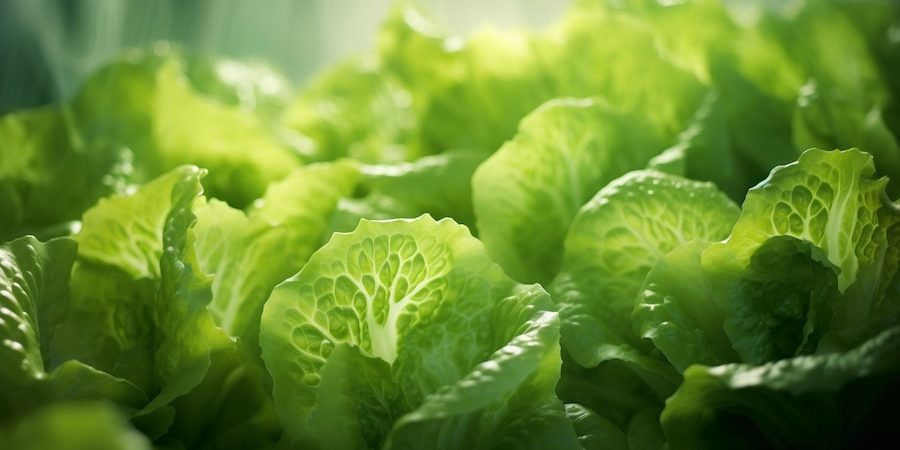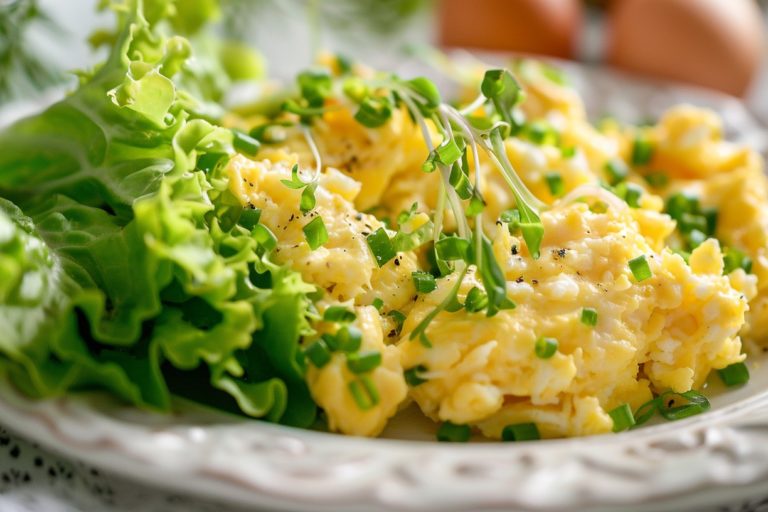With the support of our stable Hungarian producer base, this vegetable is always available in high quality in our wholesale assortment – ask us for an offer!
Lettuce is one of the most popular green leafy vegetables and can be found in almost every kitchen. Its light, crispy leaves are not only delicious but also extremely healthy, and their low calorie content makes them the perfect choice for anyone who wants to lead a healthy lifestyle. Lettuce is one of the most popular staples of the spring and summer months, but luckily it is available all year round.
How to choose fresh lettuce?
When choosing fresh lettuce, keep the following points in mind:
- Leaf condition: the lettuce leaves should be bright green or light green (depending on the variety), free of spots and crisp. Avoid wilted, damaged or browning leaves.
- Head firmness: the head of the headcheese should be firm, but not too hard. A head that is too loose may contain fewer leaves, while a head that is too tight may be woody.
- Root: If you still have a root, it should be moist and clean. A dry root indicates an older crop.
How to use lettuce in the kitchen?
Lettuce is easy to incorporate into your daily diet and can be used as an ingredient in many dishes. Here are some popular uses:
- Fresh salads: lettuce is the base of mixed vegetable salads. It can be combined with tomatoes, cucumbers, peppers and other seasonal vegetables. It is the perfect accompaniment to a simple vinaigrette or yoghurt dressing.
- Sandwiches and wraps: its crunchy leaves are excellent for layering sandwiches and wraps, adding freshness and texture to these dishes.
- Serve as a light, fresh side dish with steamed vegetables, fish or meat.
- Decoration: when served elegantly, the lettuce leaves can also be used as decoration, for example under cold dishes or appetizers.
How to store lettuce?
Lettuce is a delicate vegetable that can quickly lose its freshness if not stored properly. The following tips will help keep your lettuce crisp for longer:
- Refrigeration: keep the salad in the vegetable compartment of the fridge, in a plastic bag or storage box. Do not wash before storage as moisture can cause rapid rotting.
- Paper towel storage: once the salad has been washed, place a paper towel in the container to absorb excess moisture and prevent wilting.
- Refresh: If the lettuce looks a little wilted, place it in cold water for 10-15 minutes – this will help it regain its crispy texture.
Interesting facts about lettuce
- History: the cultivation of lettuce dates back more than 2000 years and was highly valued in ancient Egypt, Greece and Rome.
- Nutrients: lettuce is rich in vitamins A, C, K and folic acid, which contribute to healthy skin, bones and immune system.
- Moisturising: lettuce leaves have a water content of almost 95%, so they are not only refreshing but also hydrating – ideal especially in the summer heat.
- Calorie content: a serving of lettuce contains only 10-15 calories, making it an ideal staple for dietary meals.
Tips for using lettuce
- Wash gently: always wash the lettuce in cold water to remove dust and dirt, then gently dry it with a salad spinner or tea towel.
- Fresh consumption: lettuce is best eaten fresh, as it loses its flavour and nutritional value quickly during storage.
- Dressings: the flavour of the lettuce can easily be enhanced with simple dressings such as olive oil, lemon juice, balsamic vinegar or yoghurt-based dressings.
Why choose lettuce?
Lettuce is not only delicious, but also extremely healthy. It is easy to digest, low in calories and can be added to almost any meal. Whether it’s for light summer salads, healthy sandwiches or a spectacular serving, lettuce is a staple in every kitchen.



